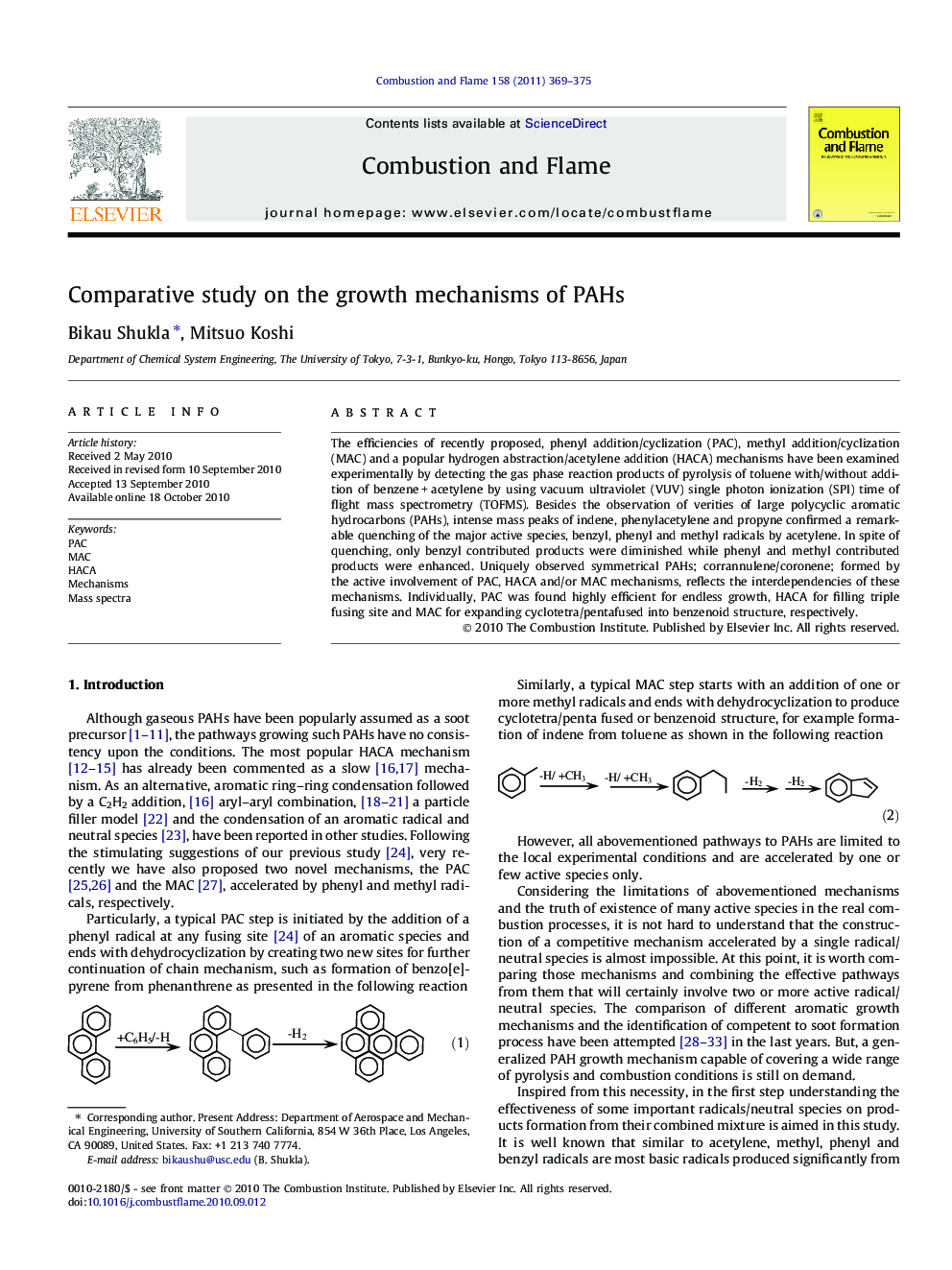| Article ID | Journal | Published Year | Pages | File Type |
|---|---|---|---|---|
| 169512 | Combustion and Flame | 2011 | 7 Pages |
The efficiencies of recently proposed, phenyl addition/cyclization (PAC), methyl addition/cyclization (MAC) and a popular hydrogen abstraction/acetylene addition (HACA) mechanisms have been examined experimentally by detecting the gas phase reaction products of pyrolysis of toluene with/without addition of benzene + acetylene by using vacuum ultraviolet (VUV) single photon ionization (SPI) time of flight mass spectrometry (TOFMS). Besides the observation of verities of large polycyclic aromatic hydrocarbons (PAHs), intense mass peaks of indene, phenylacetylene and propyne confirmed a remarkable quenching of the major active species, benzyl, phenyl and methyl radicals by acetylene. In spite of quenching, only benzyl contributed products were diminished while phenyl and methyl contributed products were enhanced. Uniquely observed symmetrical PAHs; corrannulene/coronene; formed by the active involvement of PAC, HACA and/or MAC mechanisms, reflects the interdependencies of these mechanisms. Individually, PAC was found highly efficient for endless growth, HACA for filling triple fusing site and MAC for expanding cyclotetra/pentafused into benzenoid structure, respectively.
